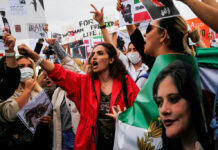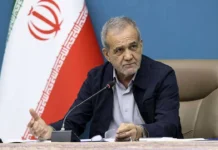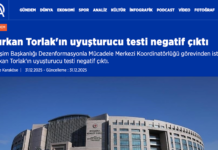The Turkish original of this article was published as
Putin, Erdoğan ve bölgenin geleceğinde Kürtler on 27th November 2015.
Turkey’s downing of a Russian warplane has taken the Syrian question to a higher level. Even as we keep saying that this crisis has resulted from a strategic conflict between the two countries, we cannot ignore the fact that it goes far beyond that.
In their press conferences immediately after the downing of the plane, in response to various questions both Obama and Hollande expressed their support for Turkey, which had “the right to protects its borders,” they said. When the NATO general secretary added another statement in the same vein, it became even clearer that the crisis was really “a crisis berween Russia and the Western bloc.”
Obama further specified his position by declaring that it would be better for “Russia to target IS, instead of the moderate forces that Turkey and the West are supporting.”
It appears that before the two sides sit down to discuss Assad’s future, the Damascus régime would like to be able to launch a move to recover certain areas stretching along the border with Turkey. Obviously, Russia’s air bombardment is directed to this end.
What are the Kurds going to do?
Pro-PYD Kurds constitute yet another dimension of this conflict, as may now be seen by all. When Assad paid his recent visit to Moscow a few days ago, PYD co-chair (Ms) Asya Abdullah and her delegation were also in Moscow. It was widely commented that the talks were dedicated to setting up an “Assad-PYD collaboration” under Russian patronage.
In a statement to [the Kurdish-Turkish weekly] BasHaber [BasNûçe], Professor Abbas Vali of Boğaziçi University had this to say about these developments: “The PYD has been rejoicing over Russia’s intervention in Syria. A Russian-PYD alliance is inevitable. Russian bombardments against radical Islamic groups in the field will have a dramatic impact on the PYD’s operations. (…) Russian operations will be greatly strengthening the PYD in the field.”
Turkey’s Syrian policy
In the wake of the 7th June 2015 elections, the PKK re-intensified the armed conflict and launched a series of declarations of “self-government” in the Kurdish region. Now on the rise are commentaries that see this new course as also part of the same [Russian-Kurdish] collaboration. The escalation of the crisis between Turkey and Russia may be said to have further contributed to clarifying the process of re-alignment in the Middle East: While the US (and NATO) would like to see Assad removed, Russia, Iran, and the Shiite administration that runs Baghdad are all backing Assad. Russia, in particular, is providing ever more effective military support to Assad. European media, on the other hand, are increasingly calling for a “de-escalation of tension.”
Let’s turn to look at what the Kurds might do and which side they might end up aligning themselves with. First and foremost, it has become crystal clear in the Kurdish autonomous region in northern Iraq, Iran is supporting the anti-Barzani forces of Talabani and the Goran Movement.
Thus the Kurds of Iraq are divided between these two blocs. While Barzani is still in power and part of the Western bloc, the opposition has aligned itself with the other side. As for the PKK and its Syrian extension PYD, what position are they going to take? While the PYD had won the West’s sympathy during the Kobane resistance, and had benefited from US and coalition air support, it will eventually be forced to make up its mind as these alignments crystallize still further.
Speaking at a Sochi meeting on 23rd October 2015, this is how Putin formulated their air bombardment objectives as well as outlook on the Kurds: “You cannot separate terrorists into two as those that are moderate and not. Overcoming the terrorist groups in Syria will not suffice to solve all problems, but it will create the conditions for a political solution. The government forces and the Kurdish forces in Syria have got to unite in the struggle against terrorism. Our operations in Syria will have a positive impact in that regard.”
Shielding Assad
In short, Russia is trying to strengthen its hand before it sits down to negotiate with the West for a solution.
The overall picture is this: Putin wants to strengthen Assad, and also to crush the “moderate opposition” supported by the West so as to prevent them from sitting down at the negotiation table. He plans to unite the pro-PYD Kurds with the Assad régime in order to reinforce a whole front also comprising Iran, Baghdad, and the Lebanese Hizbollah. The ultimate objective is to have greater weight in the new map of the Middle East that is now being drawn.
Syria and the Kurds
There are varying interpretations of the PYD entering into an alliance with the Assad régime in Syria. Speaking to the weekly BasHaber [BasNûçe], Middle Eastern specialist Kawa Babekhani has argued that Russia is not in the Middle East purely as a show of strength; instead, Moscow is trying to resuscitate Damascus with the support of Iran plus the Kurds in Rojava. Babekhani notes that if Damascus were to recover, it would constitute a new menace for the Kurds. Hence he feels that a different strategy must be pursued by the Kurds in Rojava.
So while this last crisis appears to be a “Russo-Turkish conflict” at first sight, at a closer look it reveals a complex, multi-dimensional alignment. We are going through a phase when it becomes especially important to proceed calmly from the facts to objective assessments.












